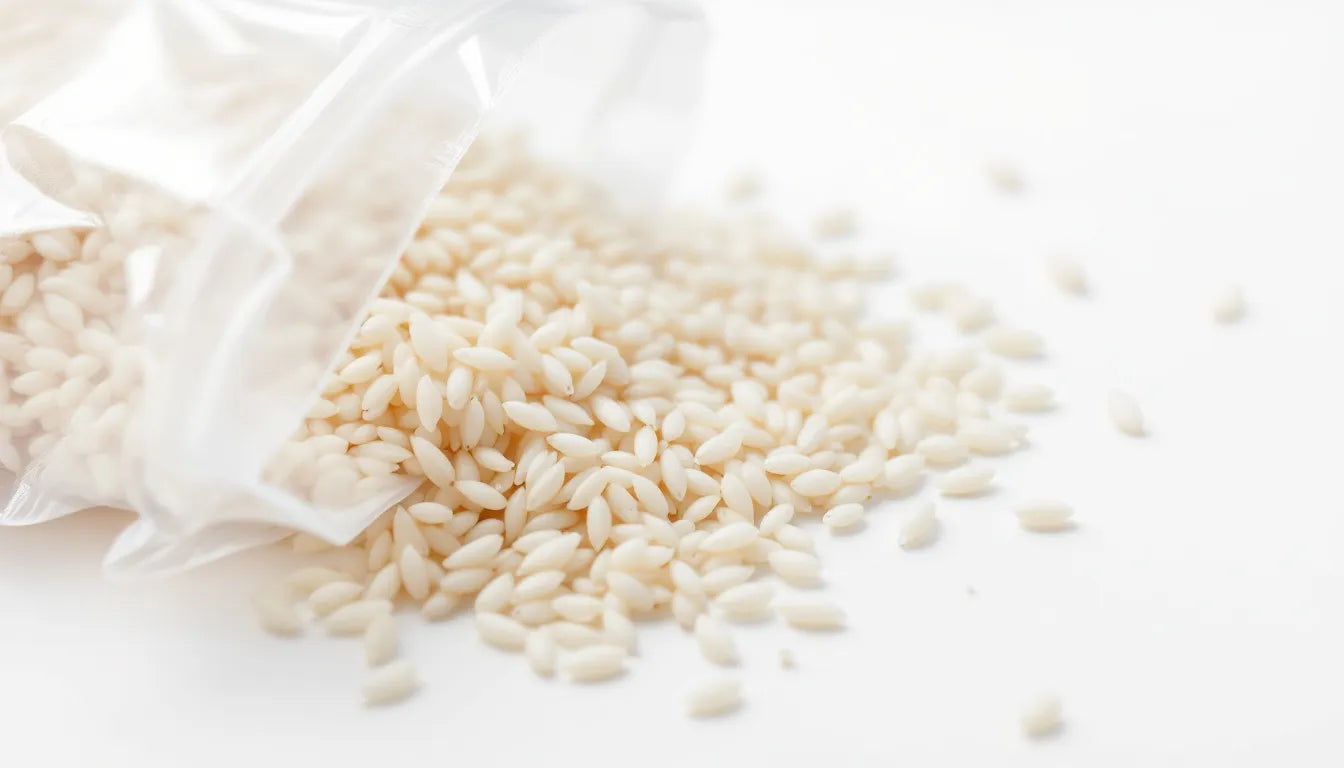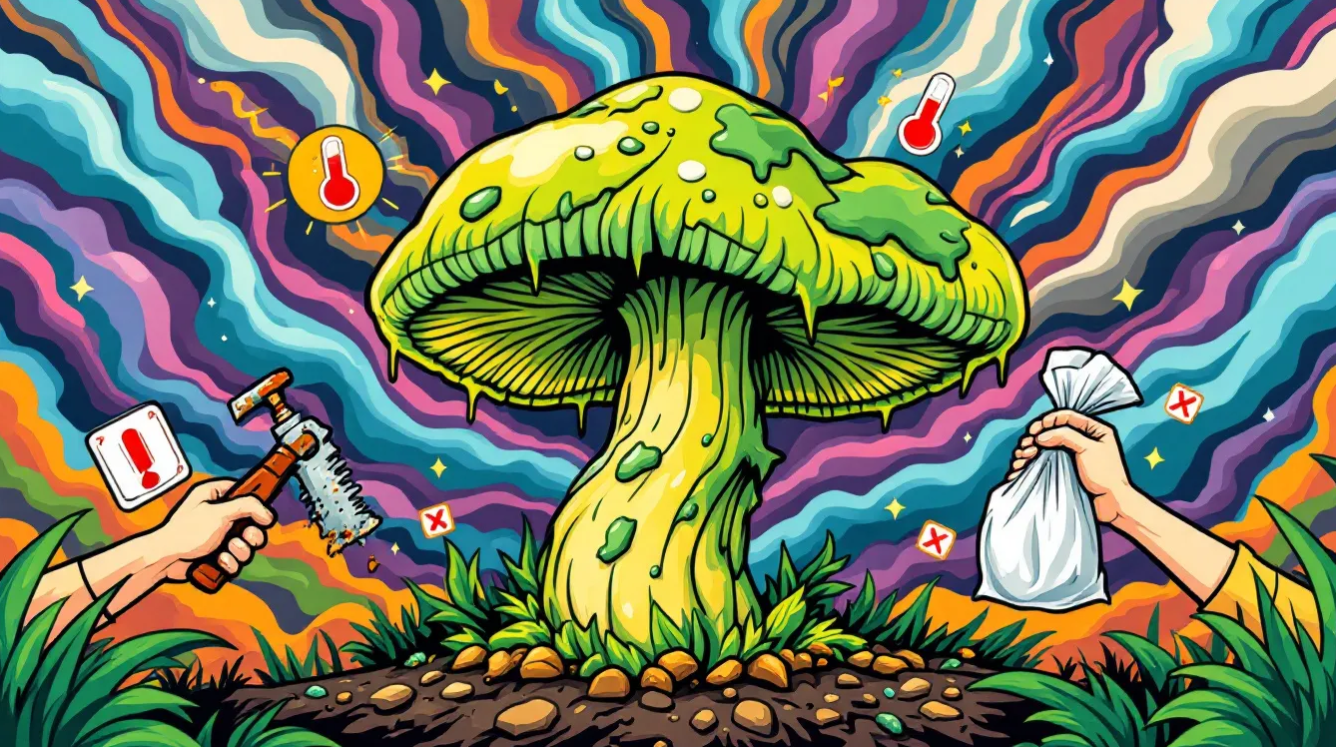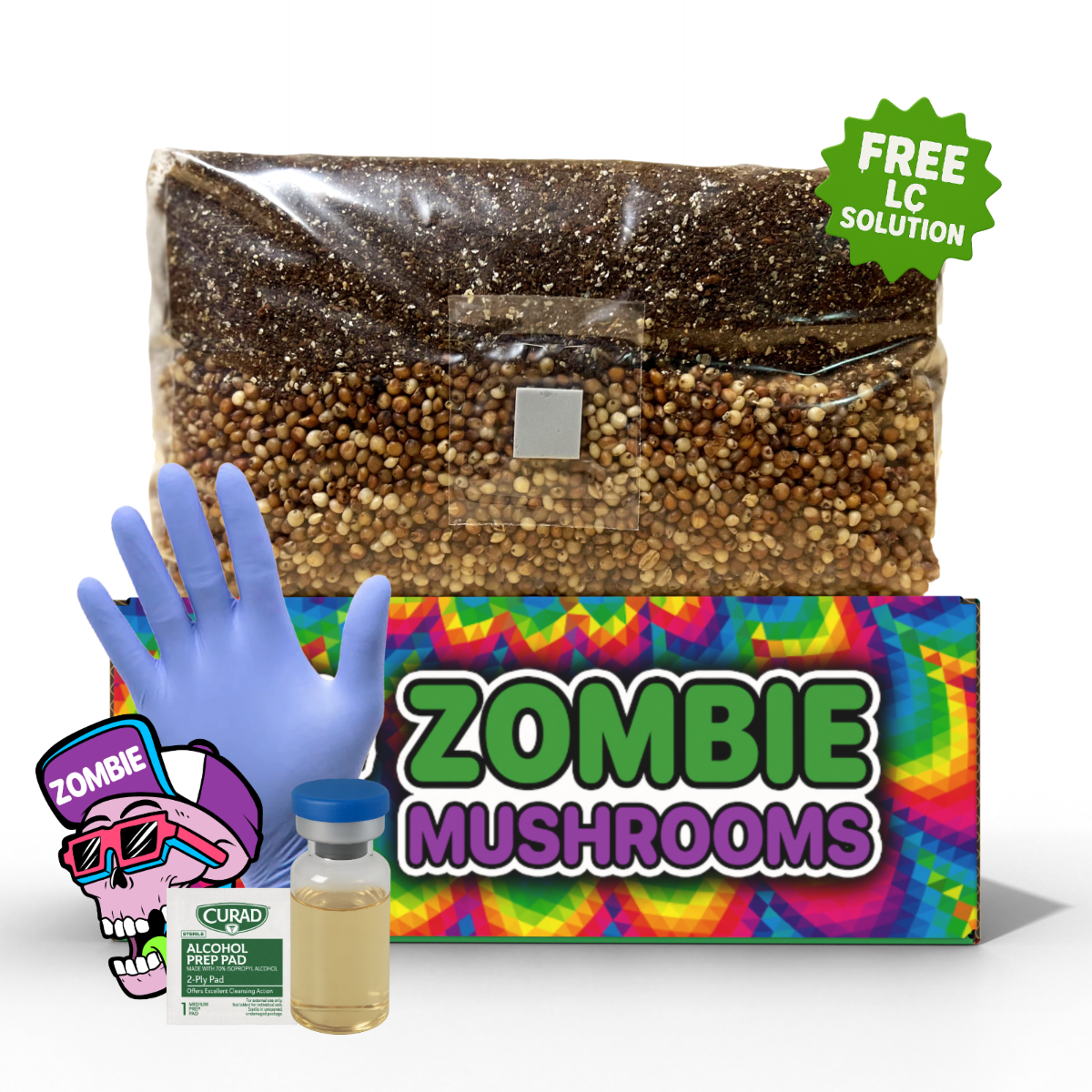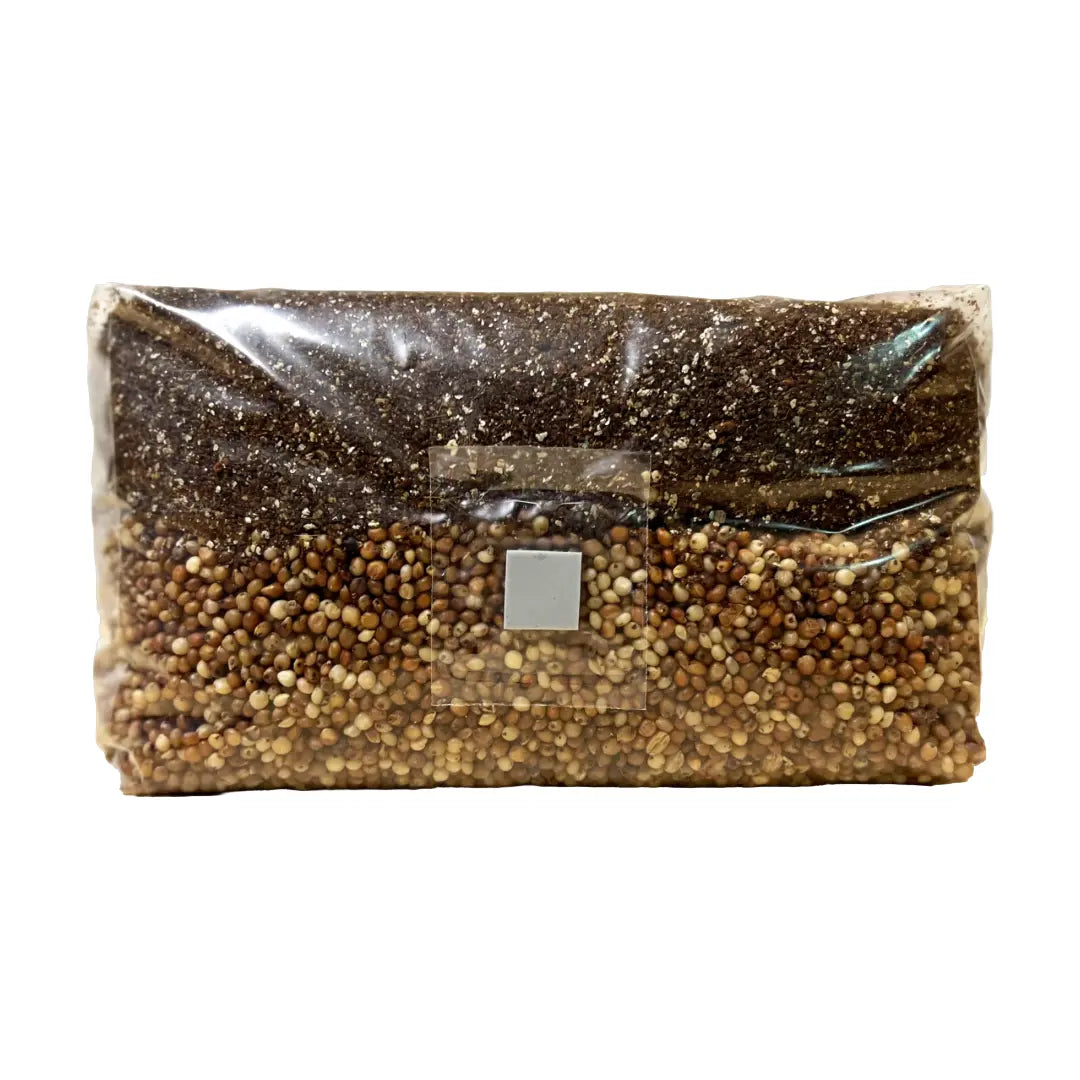- Pollution is the main reason for failure in fungi farming, making sanitation and cleanliness vital.
- Fungus needs correct air flow to stop carbon dioxide buildup and ensure healthy development.
- Hotness and dampness must be closely watched, as different fungus types have special surrounding needs.
- Using top-notch spawn from trusted sources greatly boosts the chances of a good crop.
- Crop timing is key—picking too soon or too late can hurt output, taste, and feel.
Fungi farming is a satisfying and lasting way to grow your own food, but many beginners make usual errors that can cause poor outputs—or even total failure. Whether you're just beginning or trying to better your results, avoiding these problems can get you ready for success. Here are the most usual fungi growing errors and how to fix them.

Missing Right Sanitation and Cleanliness
One of the most usual and harmful errors that beginner fungi growers make is ignoring right sanitation and cleanliness. Unlike normal gardening, where plants have natural defenses against pollutants, fungus are very open to infection by mold, germs, and other fighting things.
Why Sanitation Is Important
Fungi farming involves giving a rich, natural setting that is also great for unwanted tiny things. If pollutants take hold before your fungus set themselves up, they can quickly take over your grow.
How to Stop Pollution
- Use sanitized growing stuff like pasteurized straw or rightly pressure-sanitized grain.
- Always wash your hands and tools before touching any spawn or mycelium.
- If able, work in a clean or sanitized spot, such as a still air box (SAB) or laminar flow hood.
- Put on gloves and a face cover to stop airborne pollutants from landing on your growing stuff.
- Put money into an air cleaning system or run a HEPA filter near your growing area.
Even small slips in cleanliness can invite pollution, so always be very careful.

Not Giving Enough Fresh Air Change (FAE)
Right air flow is one of the most missed parts of good fungi farming. Fungus, like animals, need oxygen and make carbon dioxide (CO₂). If CO₂ builds up, it can cause stunted, leggy, or badly formed fungus.
Signs of Bad Airflow
- Long, thin, or stretched-out fungus stems (called “legginess”).
- Caps that look deformed or not fully grown.
- Stopped or slow growth speeds.
How to Better Fresh Air Change
- If growing inside, fan your growing space several times a day to put in fresh oxygen and take out too much CO₂.
- Think about using a monotub with right air holes or a grow tent with enough air flow.
- Keep a good balance between dampness and air flow to stop drying out your fungus while making sure enough oxygen.
Right FAE will cause healthier fruiting bodies, leading to a better total output.

Mucking Up Hotness and Dampness Levels
Fungus needs special hotness and dampness conditions to do well, and small changes can badly hurt their growth.
Usual Hotness and Dampness Errors
- Not checking out the best conditions for the special fungus type being grown.
- Letting sudden hotness changes, which can shock the mycelium.
- Keeping dampness too low, causing fungus to dry out and grow poorly.
Best Conditions for Liked Fungus Types
- Oyster Fungus: 70–75% dampness, 55–65°F (fruiting stage).
- Shiitake Fungus: 85–90% dampness, 50–65°F.
- Lion’s Mane Fungus: 90% dampness, 50–70°F.
How to Keep Steady Conditions
- Use a hotness and dampness meter to watch your grow room.
- If dampness is too low, use a damp maker or mist often to keep wetness levels.
- Avoid drafty spots or hotness changes near windows, heating vents, or air conditioners.
Fine-tuning hotness and dampness to fit your fungus type will greatly better outputs and quality.

Using Low-Quality or Polluted Spawn
Your whole fungus grow depends on top-notch spawn. If you begin with polluted or weak spawn, your crop will likely fail before it even starts.
How to Pick the Best Spawn
- Buy from trusted sellers who test and make sure their spawn is free from pollutants.
- Avoid spawn that looks off-color, has mold, or smells bad.
- Pick grain spawn for fast taking over or sawdust spawn for special types like shiitake.

Ignoring Light Needs
Many people think that fungus grow best in darkness, but this is a usual wrong idea. While fungus don’t photosynthesize like plants, they do need indirect or soft light for right fruiting.
Signs of Not Enough Lighting
- Fungus fail to form caps rightly.
- Growth is uneven or weak.
- Fruiting bodies look pale or too thin.
Giving the Right Amount of Light
- Put your fungus in a spot with normal, indirect light.
- If growing in a dark room, use LED or glowing lights on a 12-hour cycle.
- Avoid direct sunlight, which can overheat and dry out the fungus.
A steady, soft light source helps start healthy fruiting conditions.

Harvesting at the Wrong Time
Picking fungus too soon or late can badly hurt both output and taste.
How to Harvest at the Right Time
- Pick fungus when caps are fully formed but haven’t dropped spores yet.
- For oyster fungus, crop when caps begin to get flat.
- Use a sharp knife or scissors to cut at the base and avoid hurting the mycelium.
Timing is very important for both quality and future flushes from the same growing stuff.

Not Matching the Growing Stuff to the Fungus Type
Fungus grow by eating natural growing stuff, and using the wrong stuff can stop their growth.
Best Growing Stuff for Liked Kinds
- Oyster Fungus: Straw, coffee grounds, sawdust.
- Shiitake Fungus: Hardwood logs or sawdust-based blocks.
- Lion’s Mane Fungus: Hardwood sawdust or logs.
Always check out the liked growing stuff for the fungus type you're growing to get the most success.

Cutting Corners to Save Time
Fungi farming needs patience, and missing key steps often leads to failure.
Usual Shortcuts That Lead to Problems
- Missing sanitation and hoping pollutants won’t show up.
- Using non-sanitized home containers instead of right tools.
- Not keeping dampness, leading to dried-out fungus.
A careful, step-by-step way makes the best long-term results.

Liked Grow Kits to Begin With
For beginners who want to avoid usual errors, fungus grow kits give a simple, easy way to get started.
Suggested Fungus Grow Kits
- Lion's Mane Fungus Growing Kit – Best for very healthy, medical fungus.
- Fungus Kit Bundle - Choose Any 2 & Save – A great way to try out different kinds.
- Blue-Grey Oyster Fungus Growing Kit – Easy for beginners and fast-growing.
- Yellow-Gold Oyster Fungus Growing Kit – A tasty and good-looking choice.
By following these best ways and putting money into the right tools, you can good grow fungus at home with least trouble. Whether you're growing for food use or medical good things, knowing and fixing these usual errors will get you ready for long-term success.
Citations
- Chang, S. T., & Miles, P. G. (2004). Fungus: Farming, Food Value, Medical Effect, and Surrounding Impact. CRC Press.
- Stamets, P. (2005). Mycelium Running: How Fungus Can Help Save the World. Ten Speed Press.
- Jones, D. (2021). "Usual Pollutants in Home Fungus Growing and How to Stop Them." Journal of Applied Mycology, 27(3), 45-56.



